-
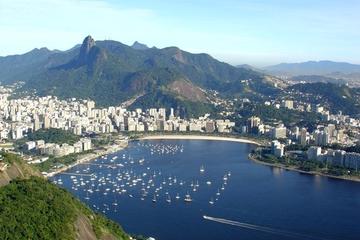 Rio de Janeiro Cruise Port
Rio de Janeiro Cruise Port Already known as one of the world’s most vibrant cities, Rio de Janeiro will likely see its popularity continue to soar as it hosts the 2014 World Cup and the 2016 Summer Olympics. A city of six million people, Rio is glittering, vibrant and sexy and is sure to dazzle mo
Rio de Janeiro Cruise Port
Rio de Janeiro Cruise Port Already known as one of the world’s most vibrant cities, Rio de Janeiro will likely see its popularity continue to soar as it hosts the 2014 World Cup and the 2016 Summer Olympics. A city of six million people, Rio is glittering, vibrant and sexy and is sure to dazzle mo
-
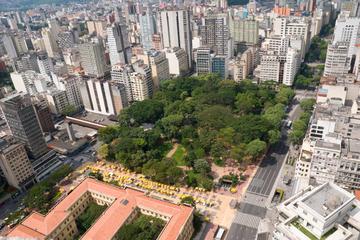 Republic Square (Praça da República)
Republic Square (Praça da República) A rectangular eye at the center of the urban hurricane that is São Paulo, Praça da República might have seen better days, but the plaza still holds on to its importance as a focal point for cultural life in the city. Built in 1889 to commemorate a new era in th
Republic Square (Praça da República)
Republic Square (Praça da República) A rectangular eye at the center of the urban hurricane that is São Paulo, Praça da República might have seen better days, but the plaza still holds on to its importance as a focal point for cultural life in the city. Built in 1889 to commemorate a new era in th
-
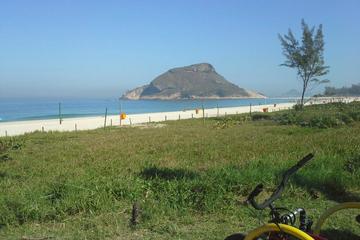 Recreio dos Bandeirantes Beach
Recreio dos Bandeirantes Beach Located in the far west of Rio, Recreio dos Bandeirantes is a beach seldom visited by tourists. The waterfront area houses a quiet, upper-middle class neighborhood that bears the same name and is most commonly referred to as just ‘Recreio.’ Although the 12+-mile (20-
Recreio dos Bandeirantes Beach
Recreio dos Bandeirantes Beach Located in the far west of Rio, Recreio dos Bandeirantes is a beach seldom visited by tourists. The waterfront area houses a quiet, upper-middle class neighborhood that bears the same name and is most commonly referred to as just ‘Recreio.’ Although the 12+-mile (20-
-
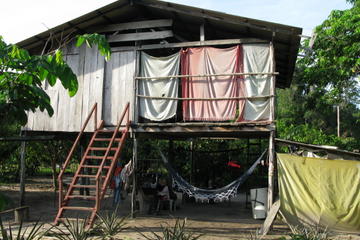 Presidente Figueiredo
Presidente Figueiredo Known as the Land of Waterfalls, the town of Presidente Figueiredo is a hub for Brazil’s natural wonders. Close proximity to the picturesque Sanctuary and Iracema falls, as well as its rushing rivers, jungle treks and dark caves make it the perfect destination for travelers s
Presidente Figueiredo
Presidente Figueiredo Known as the Land of Waterfalls, the town of Presidente Figueiredo is a hub for Brazil’s natural wonders. Close proximity to the picturesque Sanctuary and Iracema falls, as well as its rushing rivers, jungle treks and dark caves make it the perfect destination for travelers s
-
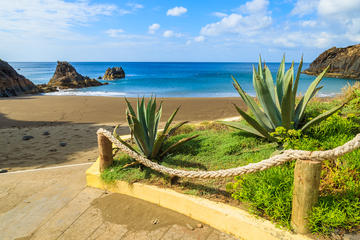 Prainha Beach
Prainha Beach Prainha Beach, one of Rio’s best kept secrets, consists of a secluded bay, forested hills and beach restaurants with fresh fish and seafood on the menu. Located on the westernmost tip of the Barra da Tijuca district, Prainha Beach is part of a protected rain forest area and boasts 70
Prainha Beach
Prainha Beach Prainha Beach, one of Rio’s best kept secrets, consists of a secluded bay, forested hills and beach restaurants with fresh fish and seafood on the menu. Located on the westernmost tip of the Barra da Tijuca district, Prainha Beach is part of a protected rain forest area and boasts 70
-
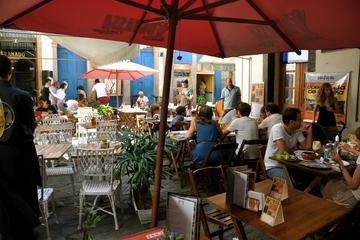 Praca Quinze
Praca Quinze Standing in the center of Praca Quinze is a way to literally and symbolically stand at the center of Brazilian history. It was here that Brazil declared itself a republic in 1822, and here that Pedro and Pedro II were coronated as emperors. It’s where slavery was abolished in modern B
Praca Quinze
Praca Quinze Standing in the center of Praca Quinze is a way to literally and symbolically stand at the center of Brazilian history. It was here that Brazil declared itself a republic in 1822, and here that Pedro and Pedro II were coronated as emperors. It’s where slavery was abolished in modern B
-
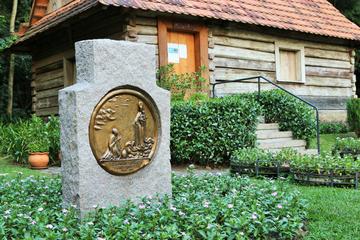 Popes Woods and Polish Memorial
Popes Woods and Polish Memorial Inaugurated in 1980, shortly after Pope John Paul II’s visit to Curitiba, the sprawling Popes Woods are made up of 515,000 square feet (48,000 square meters) of native vegetation. The area is home to the outdoor Polish Immigration Memorial, a statue of the pope and
Popes Woods and Polish Memorial
Popes Woods and Polish Memorial Inaugurated in 1980, shortly after Pope John Paul II’s visit to Curitiba, the sprawling Popes Woods are made up of 515,000 square feet (48,000 square meters) of native vegetation. The area is home to the outdoor Polish Immigration Memorial, a statue of the pope and
-
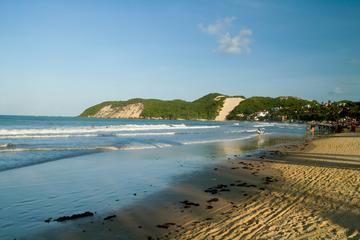 Ponta Negra Beach (Praia de Ponta Negra)
Ponta Negra Beach (Praia de Ponta Negra) The city of Manaus lies at the confluence of two major rivers, so although its quite a distance from the Brazilian coast, it still has a host of beach spots popular with locals and tourists alike. Arguably the most popular of these beach destinations is the
Ponta Negra Beach (Praia de Ponta Negra)
Ponta Negra Beach (Praia de Ponta Negra) The city of Manaus lies at the confluence of two major rivers, so although its quite a distance from the Brazilian coast, it still has a host of beach spots popular with locals and tourists alike. Arguably the most popular of these beach destinations is the
-
 Pitangui Lagoon
Pitangui Lagoon This large pool of fresh water grants a place to rest and refresh from the sun, wind, sand and adventure of the Natal beaches. Though nearly five meters deep at its center, it is shallow around the edges, making it a popular place with all types of swimmers. Its stunningly clear wa
Pitangui Lagoon
Pitangui Lagoon This large pool of fresh water grants a place to rest and refresh from the sun, wind, sand and adventure of the Natal beaches. Though nearly five meters deep at its center, it is shallow around the edges, making it a popular place with all types of swimmers. Its stunningly clear wa
-
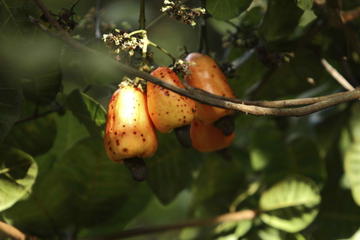 Pirangi Cashew Tree (Cajueiro de Pirangi)
Pirangi Cashew Tree (Cajueiro de Pirangi) At first glance, it seems as if you’re looking at an intricate forest— but this massive network of branches is actually just one cashew tree whose circumference measures 500 yards, producing over 60,000 nuts per year. It holds the Guinness Book of World Re
Pirangi Cashew Tree (Cajueiro de Pirangi)
Pirangi Cashew Tree (Cajueiro de Pirangi) At first glance, it seems as if you’re looking at an intricate forest— but this massive network of branches is actually just one cashew tree whose circumference measures 500 yards, producing over 60,000 nuts per year. It holds the Guinness Book of World Re
-
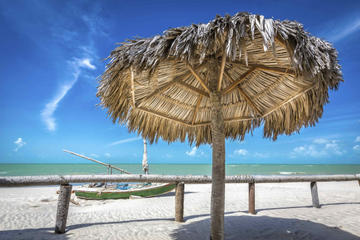 Pirangi Beach
Pirangi Beach This long, white sand beach outside of Natal is divided into two parts by the Pirangi river, creating the areas Pirangi do Norte and Pirangi do Su. Its calm, turquoise waters make it popular for swimming and water sports like surfing and diving, so competitions often take place on th
Pirangi Beach
Pirangi Beach This long, white sand beach outside of Natal is divided into two parts by the Pirangi river, creating the areas Pirangi do Norte and Pirangi do Su. Its calm, turquoise waters make it popular for swimming and water sports like surfing and diving, so competitions often take place on th
-
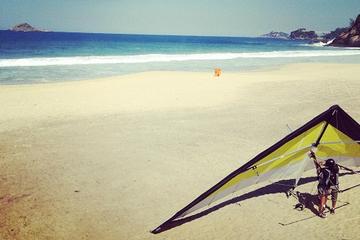 Pepino Beach
Pepino Beach Located on the southwest end of Sao Conrado Beach, Pepino Beach rounds into a picturesque cove, with lush vegetation and the granite mountains of Pedra da Gavea and Pedra Bonita rising behind it. But besides being a lovely strip of sand, Pepino Beach is most commonly known as the land
Pepino Beach
Pepino Beach Located on the southwest end of Sao Conrado Beach, Pepino Beach rounds into a picturesque cove, with lush vegetation and the granite mountains of Pedra da Gavea and Pedra Bonita rising behind it. But besides being a lovely strip of sand, Pepino Beach is most commonly known as the land
-
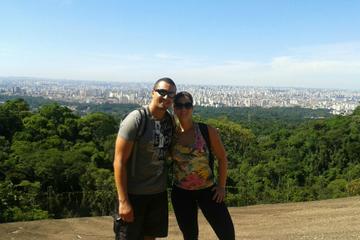 Pedra Grande (Big Rock)
Pedra Grande (Big Rock) Standing 1,418 meters high, the mountain of Pedra Grande is famous for its views across São Paulo. It also forms the centerpiece of the world’s largest native urban forest—Cantareira State Park (Parque Estadual da Cantareira). In the north of the city, Pedra Grande (which t
Pedra Grande (Big Rock)
Pedra Grande (Big Rock) Standing 1,418 meters high, the mountain of Pedra Grande is famous for its views across São Paulo. It also forms the centerpiece of the world’s largest native urban forest—Cantareira State Park (Parque Estadual da Cantareira). In the north of the city, Pedra Grande (which t
-
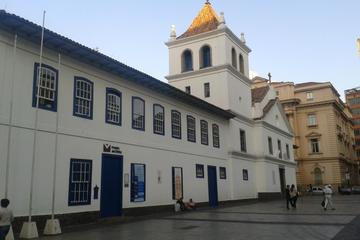 Pateo do Collegio Church
Pateo do Collegio Church This historic church is built on the exact spot where the famed city of Sao Paulo was founded. Constructed in 1554, Pateo do Collegio Chuch once served as a home, school and church for Jesuit priests. Today, the original structure includes a museum, café, library in additi
Pateo do Collegio Church
Pateo do Collegio Church This historic church is built on the exact spot where the famed city of Sao Paulo was founded. Constructed in 1554, Pateo do Collegio Chuch once served as a home, school and church for Jesuit priests. Today, the original structure includes a museum, café, library in additi
-
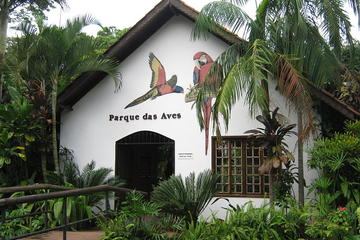 Parque das Aves (Birds Park)
Parque das Aves (Birds Park) The most famous residents of Iguacus humid subtropical forests—the parrots, toucans, lorikeets, flamingos, and other brightly colored tropical birds—can be difficult for the casual traveler to spot in the rainforest proper. Since 1994, however, those of us without a bi
Parque das Aves (Birds Park)
Parque das Aves (Birds Park) The most famous residents of Iguacus humid subtropical forests—the parrots, toucans, lorikeets, flamingos, and other brightly colored tropical birds—can be difficult for the casual traveler to spot in the rainforest proper. Since 1994, however, those of us without a bi
-
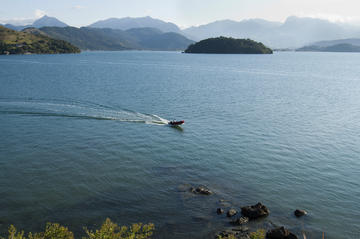 Paraty Bay
Paraty Bay About 36,000 people call the Portuguese colonial town of Paraty home. Its quiet streets, colorful homes, European influence and historic roots attract visitors from across the globe. But it’s Paraty’s easy access to lush forests, untouched coastlines and pristine mountains that make it
Paraty Bay
Paraty Bay About 36,000 people call the Portuguese colonial town of Paraty home. Its quiet streets, colorful homes, European influence and historic roots attract visitors from across the globe. But it’s Paraty’s easy access to lush forests, untouched coastlines and pristine mountains that make it
-
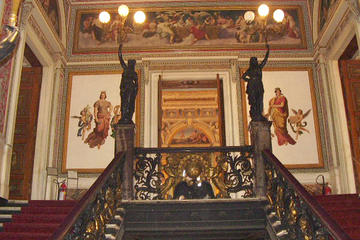 Palacio do Catete
Palacio do Catete The imposing Palacio do Catete was Brazil’s presidential palace from 1894 until 1960 when Brasilia became the capital of Brazil. The buildings now house the Museu da Republica with a focus on art and period furnishings from the Republican period and presidential memorabilia. It a
Palacio do Catete
Palacio do Catete The imposing Palacio do Catete was Brazil’s presidential palace from 1894 until 1960 when Brasilia became the capital of Brazil. The buildings now house the Museu da Republica with a focus on art and period furnishings from the Republican period and presidential memorabilia. It a
-
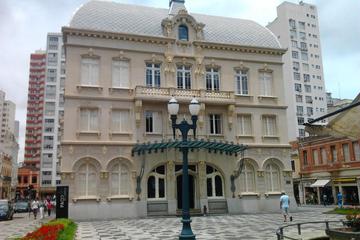 Palace of Liberty Cultural Center (Paco da Liberdade Cultural Centre)
Palace of Liberty Cultural Center (Paco da Liberdade Cultural Centre) Once Curitiba’s City Hall, the Palace of Liberty is today a multi-functional cultural center hosting conferences, lectures and exhibitions with its movie theater, sound studio and electronic art lab. Built in the beginning of th
Palace of Liberty Cultural Center (Paco da Liberdade Cultural Centre)
Palace of Liberty Cultural Center (Paco da Liberdade Cultural Centre) Once Curitiba’s City Hall, the Palace of Liberty is today a multi-functional cultural center hosting conferences, lectures and exhibitions with its movie theater, sound studio and electronic art lab. Built in the beginning of th
-
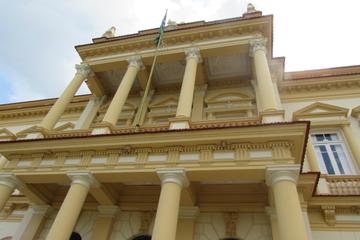 Palace of Justice (Palácio de Justiça)
Palace of Justice (Palácio de Justiça) Located on the main square in Manaus, the Palace of Justice (Palácio de Justiça) was built during the term of Governor Eduardo Ribeiro, the state governor of Manaus during the golden years of the Rubber Boom in the final years of the nineteenth century. The p
Palace of Justice (Palácio de Justiça)
Palace of Justice (Palácio de Justiça) Located on the main square in Manaus, the Palace of Justice (Palácio de Justiça) was built during the term of Governor Eduardo Ribeiro, the state governor of Manaus during the golden years of the Rubber Boom in the final years of the nineteenth century. The p
-
 Paco Imperial
Paco Imperial This former governor’s home was built in 1743 and later served as the residence of the famed Dom Joao. And while this famed Portuguese palace is renowned for its important place in both national and colonial history (the Freedom from Slavery Act was introduced on Paco Imperial’s step
Paco Imperial
Paco Imperial This former governor’s home was built in 1743 and later served as the residence of the famed Dom Joao. And while this famed Portuguese palace is renowned for its important place in both national and colonial history (the Freedom from Slavery Act was introduced on Paco Imperial’s step
Total
1166 -travel
FirstPage PreviousPage NextPage LastPage CurrentPage:
2/59 20-travel/Page GoTo Page:
 Rio de Janeiro Cruise Port
Rio de Janeiro Cruise Port Already known as one of the world’s most vibrant cities, Rio de Janeiro will likely see its popularity continue to soar as it hosts the 2014 World Cup and the 2016 Summer Olympics. A city of six million people, Rio is glittering, vibrant and sexy and is sure to dazzle mo
Rio de Janeiro Cruise Port
Rio de Janeiro Cruise Port Already known as one of the world’s most vibrant cities, Rio de Janeiro will likely see its popularity continue to soar as it hosts the 2014 World Cup and the 2016 Summer Olympics. A city of six million people, Rio is glittering, vibrant and sexy and is sure to dazzle mo
 Republic Square (Praça da República)
Republic Square (Praça da República) A rectangular eye at the center of the urban hurricane that is São Paulo, Praça da República might have seen better days, but the plaza still holds on to its importance as a focal point for cultural life in the city. Built in 1889 to commemorate a new era in th
Republic Square (Praça da República)
Republic Square (Praça da República) A rectangular eye at the center of the urban hurricane that is São Paulo, Praça da República might have seen better days, but the plaza still holds on to its importance as a focal point for cultural life in the city. Built in 1889 to commemorate a new era in th
 Recreio dos Bandeirantes Beach
Recreio dos Bandeirantes Beach Located in the far west of Rio, Recreio dos Bandeirantes is a beach seldom visited by tourists. The waterfront area houses a quiet, upper-middle class neighborhood that bears the same name and is most commonly referred to as just ‘Recreio.’ Although the 12+-mile (20-
Recreio dos Bandeirantes Beach
Recreio dos Bandeirantes Beach Located in the far west of Rio, Recreio dos Bandeirantes is a beach seldom visited by tourists. The waterfront area houses a quiet, upper-middle class neighborhood that bears the same name and is most commonly referred to as just ‘Recreio.’ Although the 12+-mile (20-
 Presidente Figueiredo
Presidente Figueiredo Known as the Land of Waterfalls, the town of Presidente Figueiredo is a hub for Brazil’s natural wonders. Close proximity to the picturesque Sanctuary and Iracema falls, as well as its rushing rivers, jungle treks and dark caves make it the perfect destination for travelers s
Presidente Figueiredo
Presidente Figueiredo Known as the Land of Waterfalls, the town of Presidente Figueiredo is a hub for Brazil’s natural wonders. Close proximity to the picturesque Sanctuary and Iracema falls, as well as its rushing rivers, jungle treks and dark caves make it the perfect destination for travelers s
 Prainha Beach
Prainha Beach Prainha Beach, one of Rio’s best kept secrets, consists of a secluded bay, forested hills and beach restaurants with fresh fish and seafood on the menu. Located on the westernmost tip of the Barra da Tijuca district, Prainha Beach is part of a protected rain forest area and boasts 70
Prainha Beach
Prainha Beach Prainha Beach, one of Rio’s best kept secrets, consists of a secluded bay, forested hills and beach restaurants with fresh fish and seafood on the menu. Located on the westernmost tip of the Barra da Tijuca district, Prainha Beach is part of a protected rain forest area and boasts 70
 Praca Quinze
Praca Quinze Standing in the center of Praca Quinze is a way to literally and symbolically stand at the center of Brazilian history. It was here that Brazil declared itself a republic in 1822, and here that Pedro and Pedro II were coronated as emperors. It’s where slavery was abolished in modern B
Praca Quinze
Praca Quinze Standing in the center of Praca Quinze is a way to literally and symbolically stand at the center of Brazilian history. It was here that Brazil declared itself a republic in 1822, and here that Pedro and Pedro II were coronated as emperors. It’s where slavery was abolished in modern B
 Popes Woods and Polish Memorial
Popes Woods and Polish Memorial Inaugurated in 1980, shortly after Pope John Paul II’s visit to Curitiba, the sprawling Popes Woods are made up of 515,000 square feet (48,000 square meters) of native vegetation. The area is home to the outdoor Polish Immigration Memorial, a statue of the pope and
Popes Woods and Polish Memorial
Popes Woods and Polish Memorial Inaugurated in 1980, shortly after Pope John Paul II’s visit to Curitiba, the sprawling Popes Woods are made up of 515,000 square feet (48,000 square meters) of native vegetation. The area is home to the outdoor Polish Immigration Memorial, a statue of the pope and
 Ponta Negra Beach (Praia de Ponta Negra)
Ponta Negra Beach (Praia de Ponta Negra) The city of Manaus lies at the confluence of two major rivers, so although its quite a distance from the Brazilian coast, it still has a host of beach spots popular with locals and tourists alike. Arguably the most popular of these beach destinations is the
Ponta Negra Beach (Praia de Ponta Negra)
Ponta Negra Beach (Praia de Ponta Negra) The city of Manaus lies at the confluence of two major rivers, so although its quite a distance from the Brazilian coast, it still has a host of beach spots popular with locals and tourists alike. Arguably the most popular of these beach destinations is the
 Pitangui Lagoon
Pitangui Lagoon This large pool of fresh water grants a place to rest and refresh from the sun, wind, sand and adventure of the Natal beaches. Though nearly five meters deep at its center, it is shallow around the edges, making it a popular place with all types of swimmers. Its stunningly clear wa
Pitangui Lagoon
Pitangui Lagoon This large pool of fresh water grants a place to rest and refresh from the sun, wind, sand and adventure of the Natal beaches. Though nearly five meters deep at its center, it is shallow around the edges, making it a popular place with all types of swimmers. Its stunningly clear wa
 Pirangi Cashew Tree (Cajueiro de Pirangi)
Pirangi Cashew Tree (Cajueiro de Pirangi) At first glance, it seems as if you’re looking at an intricate forest— but this massive network of branches is actually just one cashew tree whose circumference measures 500 yards, producing over 60,000 nuts per year. It holds the Guinness Book of World Re
Pirangi Cashew Tree (Cajueiro de Pirangi)
Pirangi Cashew Tree (Cajueiro de Pirangi) At first glance, it seems as if you’re looking at an intricate forest— but this massive network of branches is actually just one cashew tree whose circumference measures 500 yards, producing over 60,000 nuts per year. It holds the Guinness Book of World Re
 Pirangi Beach
Pirangi Beach This long, white sand beach outside of Natal is divided into two parts by the Pirangi river, creating the areas Pirangi do Norte and Pirangi do Su. Its calm, turquoise waters make it popular for swimming and water sports like surfing and diving, so competitions often take place on th
Pirangi Beach
Pirangi Beach This long, white sand beach outside of Natal is divided into two parts by the Pirangi river, creating the areas Pirangi do Norte and Pirangi do Su. Its calm, turquoise waters make it popular for swimming and water sports like surfing and diving, so competitions often take place on th
 Pepino Beach
Pepino Beach Located on the southwest end of Sao Conrado Beach, Pepino Beach rounds into a picturesque cove, with lush vegetation and the granite mountains of Pedra da Gavea and Pedra Bonita rising behind it. But besides being a lovely strip of sand, Pepino Beach is most commonly known as the land
Pepino Beach
Pepino Beach Located on the southwest end of Sao Conrado Beach, Pepino Beach rounds into a picturesque cove, with lush vegetation and the granite mountains of Pedra da Gavea and Pedra Bonita rising behind it. But besides being a lovely strip of sand, Pepino Beach is most commonly known as the land
 Pedra Grande (Big Rock)
Pedra Grande (Big Rock) Standing 1,418 meters high, the mountain of Pedra Grande is famous for its views across São Paulo. It also forms the centerpiece of the world’s largest native urban forest—Cantareira State Park (Parque Estadual da Cantareira). In the north of the city, Pedra Grande (which t
Pedra Grande (Big Rock)
Pedra Grande (Big Rock) Standing 1,418 meters high, the mountain of Pedra Grande is famous for its views across São Paulo. It also forms the centerpiece of the world’s largest native urban forest—Cantareira State Park (Parque Estadual da Cantareira). In the north of the city, Pedra Grande (which t
 Pateo do Collegio Church
Pateo do Collegio Church This historic church is built on the exact spot where the famed city of Sao Paulo was founded. Constructed in 1554, Pateo do Collegio Chuch once served as a home, school and church for Jesuit priests. Today, the original structure includes a museum, café, library in additi
Pateo do Collegio Church
Pateo do Collegio Church This historic church is built on the exact spot where the famed city of Sao Paulo was founded. Constructed in 1554, Pateo do Collegio Chuch once served as a home, school and church for Jesuit priests. Today, the original structure includes a museum, café, library in additi
 Parque das Aves (Birds Park)
Parque das Aves (Birds Park) The most famous residents of Iguacus humid subtropical forests—the parrots, toucans, lorikeets, flamingos, and other brightly colored tropical birds—can be difficult for the casual traveler to spot in the rainforest proper. Since 1994, however, those of us without a bi
Parque das Aves (Birds Park)
Parque das Aves (Birds Park) The most famous residents of Iguacus humid subtropical forests—the parrots, toucans, lorikeets, flamingos, and other brightly colored tropical birds—can be difficult for the casual traveler to spot in the rainforest proper. Since 1994, however, those of us without a bi
 Paraty Bay
Paraty Bay About 36,000 people call the Portuguese colonial town of Paraty home. Its quiet streets, colorful homes, European influence and historic roots attract visitors from across the globe. But it’s Paraty’s easy access to lush forests, untouched coastlines and pristine mountains that make it
Paraty Bay
Paraty Bay About 36,000 people call the Portuguese colonial town of Paraty home. Its quiet streets, colorful homes, European influence and historic roots attract visitors from across the globe. But it’s Paraty’s easy access to lush forests, untouched coastlines and pristine mountains that make it
 Palacio do Catete
Palacio do Catete The imposing Palacio do Catete was Brazil’s presidential palace from 1894 until 1960 when Brasilia became the capital of Brazil. The buildings now house the Museu da Republica with a focus on art and period furnishings from the Republican period and presidential memorabilia. It a
Palacio do Catete
Palacio do Catete The imposing Palacio do Catete was Brazil’s presidential palace from 1894 until 1960 when Brasilia became the capital of Brazil. The buildings now house the Museu da Republica with a focus on art and period furnishings from the Republican period and presidential memorabilia. It a
 Palace of Liberty Cultural Center (Paco da Liberdade Cultural Centre)
Palace of Liberty Cultural Center (Paco da Liberdade Cultural Centre) Once Curitiba’s City Hall, the Palace of Liberty is today a multi-functional cultural center hosting conferences, lectures and exhibitions with its movie theater, sound studio and electronic art lab. Built in the beginning of th
Palace of Liberty Cultural Center (Paco da Liberdade Cultural Centre)
Palace of Liberty Cultural Center (Paco da Liberdade Cultural Centre) Once Curitiba’s City Hall, the Palace of Liberty is today a multi-functional cultural center hosting conferences, lectures and exhibitions with its movie theater, sound studio and electronic art lab. Built in the beginning of th
 Palace of Justice (Palácio de Justiça)
Palace of Justice (Palácio de Justiça) Located on the main square in Manaus, the Palace of Justice (Palácio de Justiça) was built during the term of Governor Eduardo Ribeiro, the state governor of Manaus during the golden years of the Rubber Boom in the final years of the nineteenth century. The p
Palace of Justice (Palácio de Justiça)
Palace of Justice (Palácio de Justiça) Located on the main square in Manaus, the Palace of Justice (Palácio de Justiça) was built during the term of Governor Eduardo Ribeiro, the state governor of Manaus during the golden years of the Rubber Boom in the final years of the nineteenth century. The p
 Paco Imperial
Paco Imperial This former governor’s home was built in 1743 and later served as the residence of the famed Dom Joao. And while this famed Portuguese palace is renowned for its important place in both national and colonial history (the Freedom from Slavery Act was introduced on Paco Imperial’s step
Paco Imperial
Paco Imperial This former governor’s home was built in 1743 and later served as the residence of the famed Dom Joao. And while this famed Portuguese palace is renowned for its important place in both national and colonial history (the Freedom from Slavery Act was introduced on Paco Imperial’s step